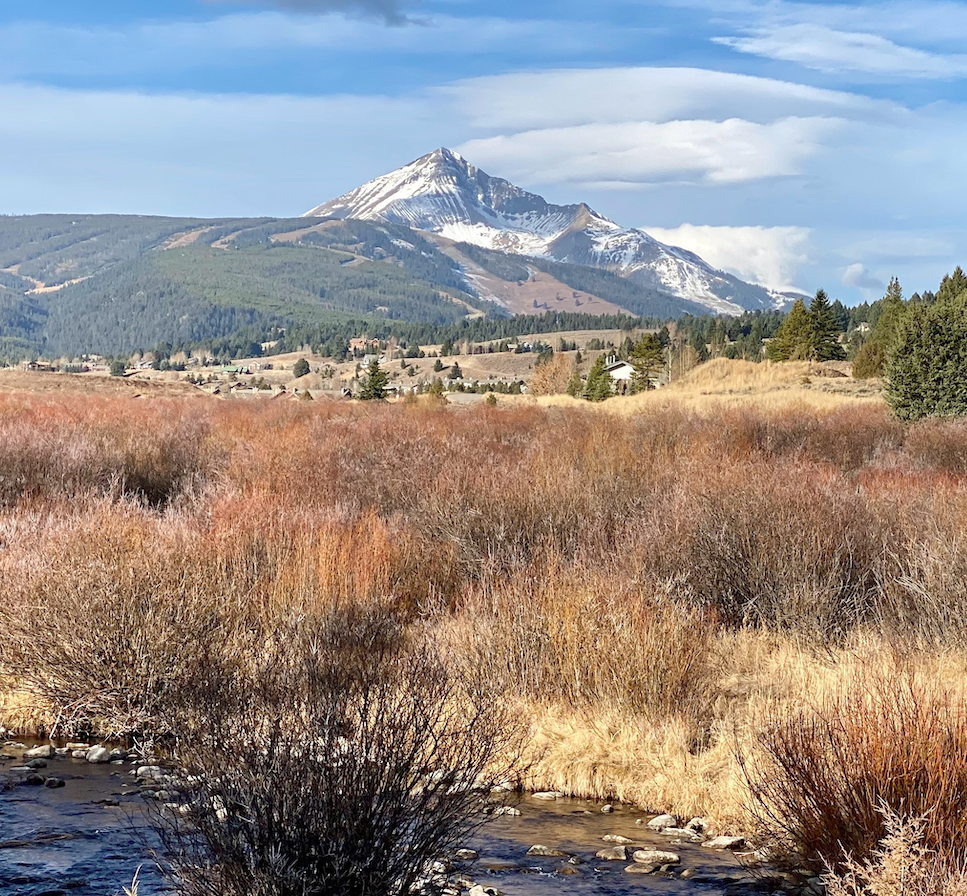The term ‘discharge permit’ in a conversation involving the Gallatin River may raise more than a few eyebrows. The idea of what that means, and the threat that exists around the (never-realized) potential of exercising that permit have long hung over Big Sky like a dark cloud.
The reality is that Big Sky is one of the few Montana communities that have never – ever – used a discharge permit to dispose of their treated wastewater into a surface water, and gave up their original discharge permit over 15 years ago. The motivation by the community’s water and sewer district was then, and continues to be, to explore other and more suitable options for reuse of our community’s treated wastewater that raise the bar on sustainability, and protect the future of water in the face of unprecedented growth and changes in climate.
For the better part of nearly 3 decades, the Big Sky County Water and Sewer District (BSWSD) has been treating and reusing community wastewater rather than disposing of the water in the Gallatin River. Reuse presents a shared win-win; it provides the BSWSD with a method of disposal and provides community partners with a source of water as an alternative to using potable groundwater for irrigation or other applications.
Wastewater from homes and businesses is treated and stored in ponds where it is held until it is reused to irrigate community golf courses and open spaces. Now, the BSWSD is upping their game with the construction of an extensively high-tech and significantly high-dollar ($50M) project that will set an unprecedented standard for the treatment of community wastewater.
Money, engineering, planning, surveying, and sophisticated work with state and federal agencies have gone into the new wastewater treatment plant that is unfolding quite literally before our eyes in Big Sky’s meadow village. This higher level of treatment will allow the BSWSD to pursue additional wastewater reuse options that are beneficial for the water system, like snowmaking and groundwater discharge. Communities across the west are moving towards increasing wastewater reuse options to combat drought and a future with less available water.
Getting to this point, however, deserves recognition, and the path to how our community, and our district, avoided using a discharge permit is one of the most important pieces of the story to tell.
In the late 1990s, the then-engineers’ plan for our community’s 20-year growth included the consideration for how Big Sky would collect, treat, and dispose of our wastewater. Part of the solution at that time was a direct discharge permit allowing approximately 20M gallons into the Gallatin River. The permit for a municipality, industry, or other entity requesting to discharge water to a surface water of the state requires that the entity first obtain a permit for this from the Montana Department of Environmental Quality. At the time, forecasting the growth ahead, this was the most appropriate foreseeable option to accommodate the flow of wastewater coming into the plant. Though the district received a seasonal discharge permit in 1998, which they held for 10 years, the pipeline to the river was never built, and the district allowed the permit to lapse in 2008.
Fast forward nearly 30 years, and the district continues to invest in environmentally sound options that are not the ‘easy’ way around our growing community’s wastewater needs (and more importantly, not the most affordable), but are the options that defined the best interests of Big Sky, and the health of the Gallatin.
“The easy way out is and has always been to use a stream discharge permit”, says Ron Edwards, BSWSD General Manager. “That would have taken care of a significant amount of the community’s wastewater, even in the early years of our growth. Taking the easy way out was never the option the district chose to pursue. That’s how we are where we are today, continuing our investments in state of the art technology to continue reusing our treated wastewater for irrigation and snowmaking.”
Today, Big Sky is home to the largest zero-direct discharge facility in the state. The new plant, expected to be fully online by 2024, will be treating this community’s wastewater using a technology that is designed to reduce nitrogen and phosphorus levels in effluent by roughly 75% and 95%, respectively. With a $50M price tag, this construction and development would not have been possible without the commitment from the Big Sky Resort Area District’s investment, or without the 1% for infrastructure bill, passed by the community in 2020.
When all is said and done, the Resort Tax will have invested nearly $27M in technological advancements to support a cleaner, more environmentally sound method of managing a growing community’s wastewater, and the BSWSD will have taken on a project that in total cost close to $80m over more than two decades.
Other critical advancements have developed along the way, including the path to using treated wastewater for snowmaking, with the first snowmaking project in Montana expected to be up and running in the Yellowstone Club by 2024. With the ability to reuse 170-175m gallons of treated wastewater running through the community’s treatment plant in the form of irrigation and snowmaking, the district is relieving the pressure on our drinking water sources as well, and are continuing to pave the way to a more robust and reliable practice of reusing water for a growing community.

